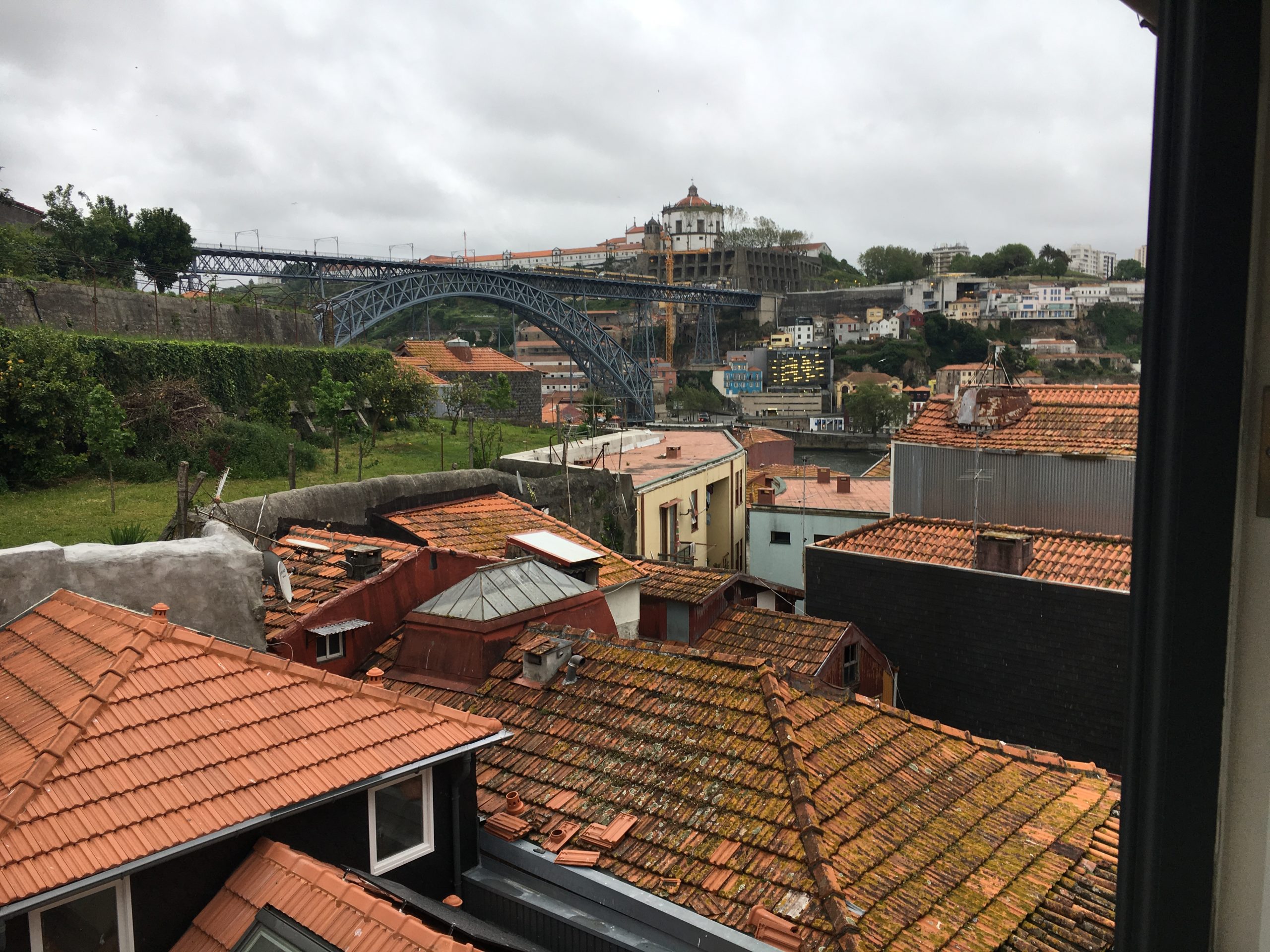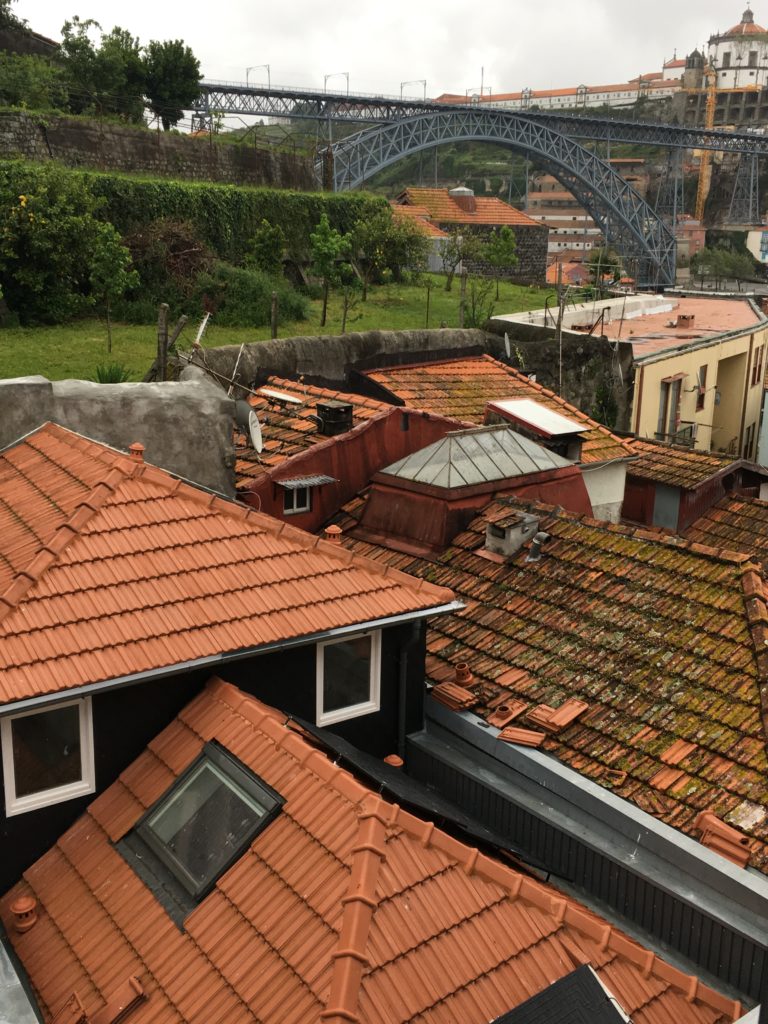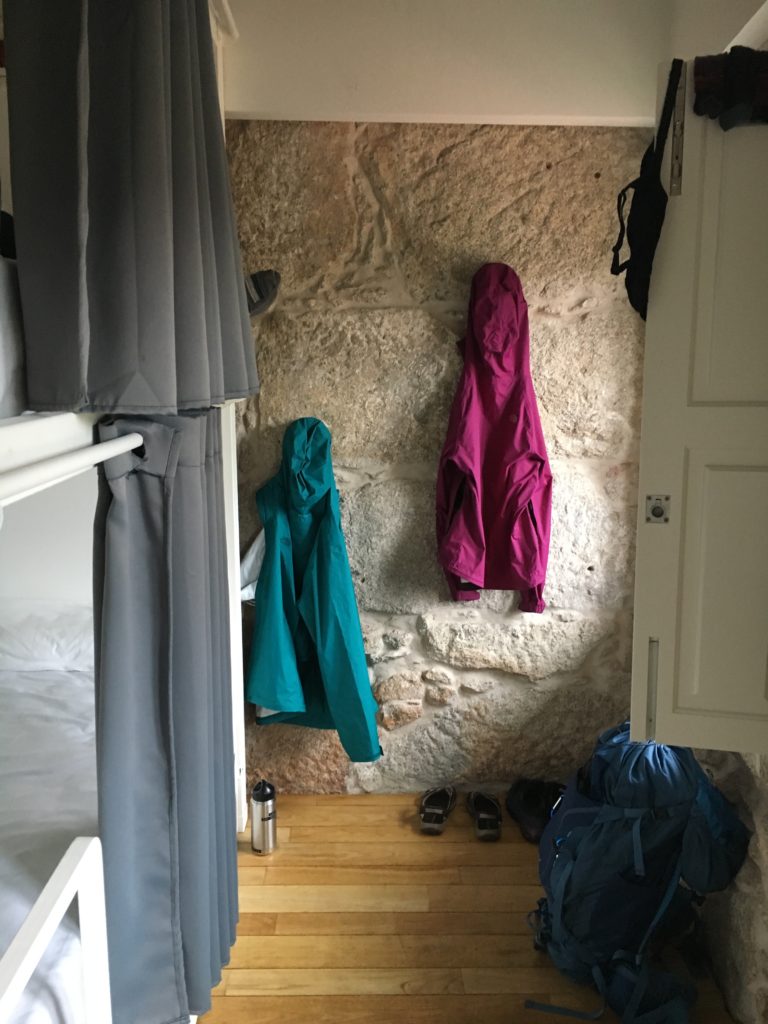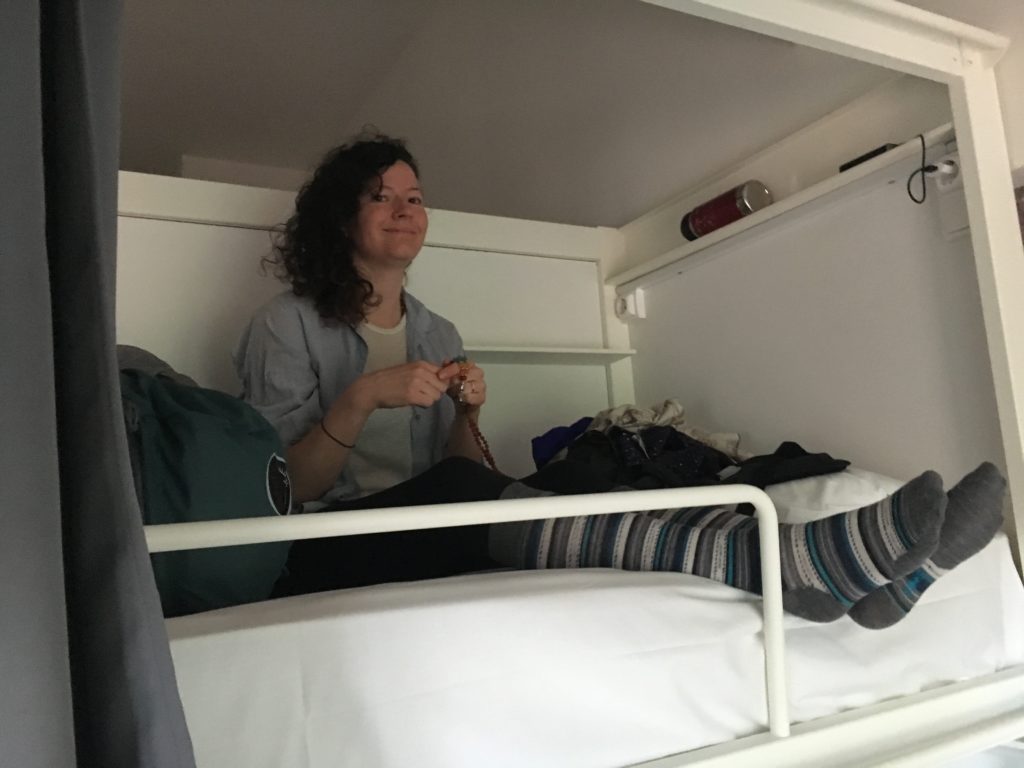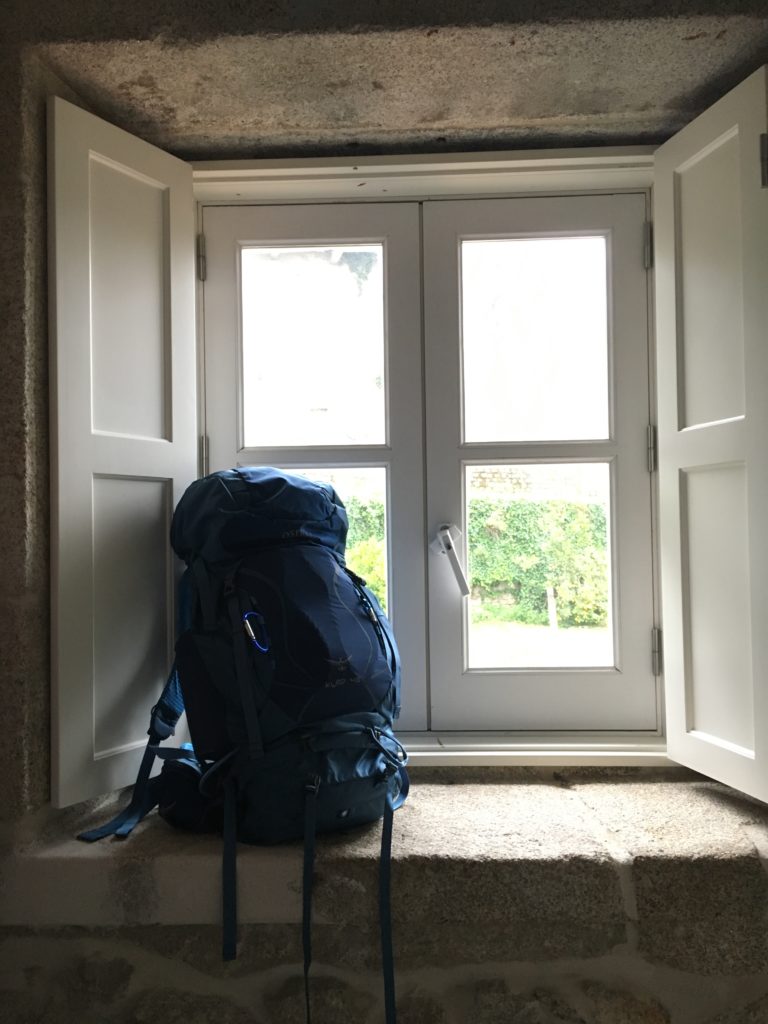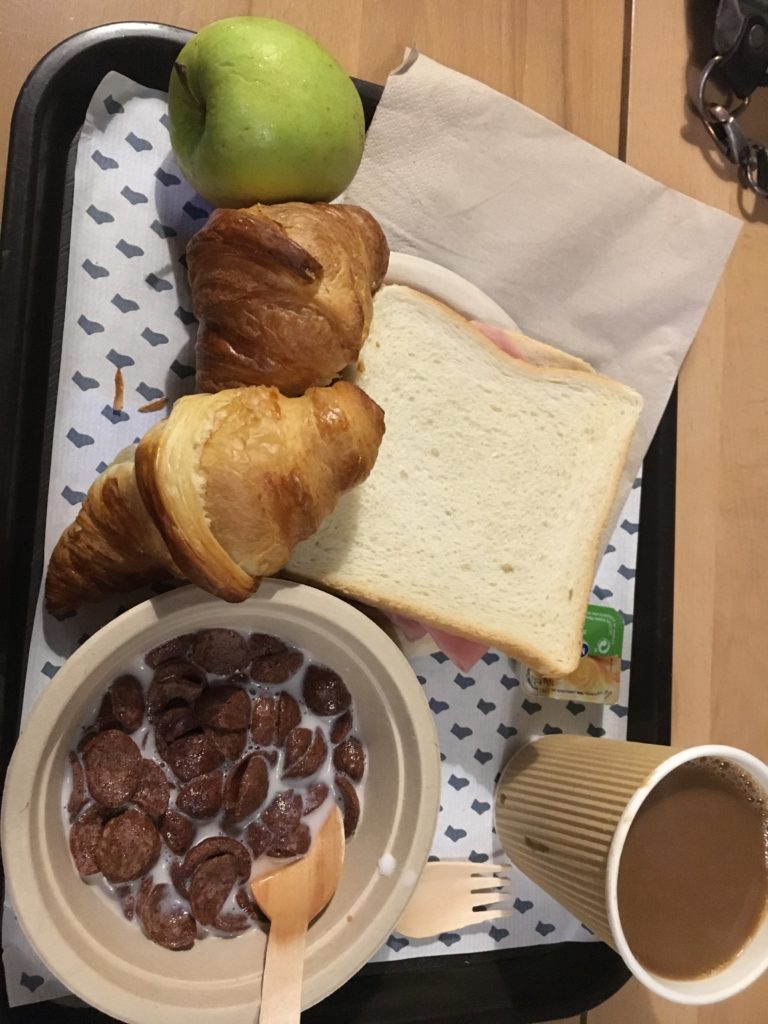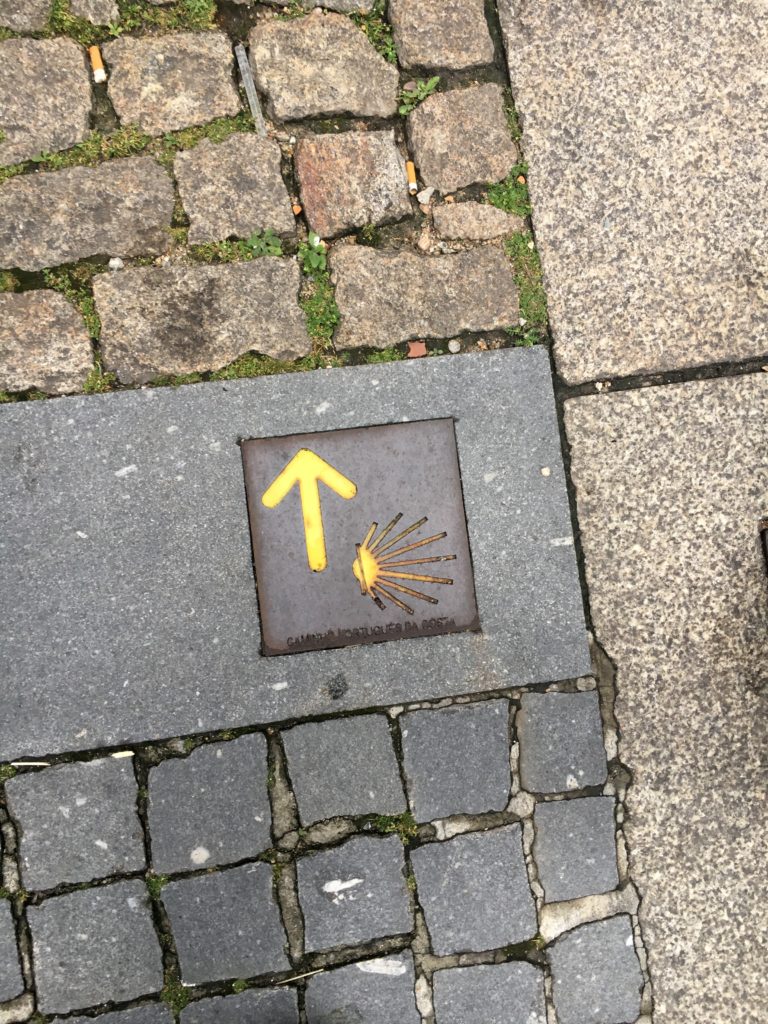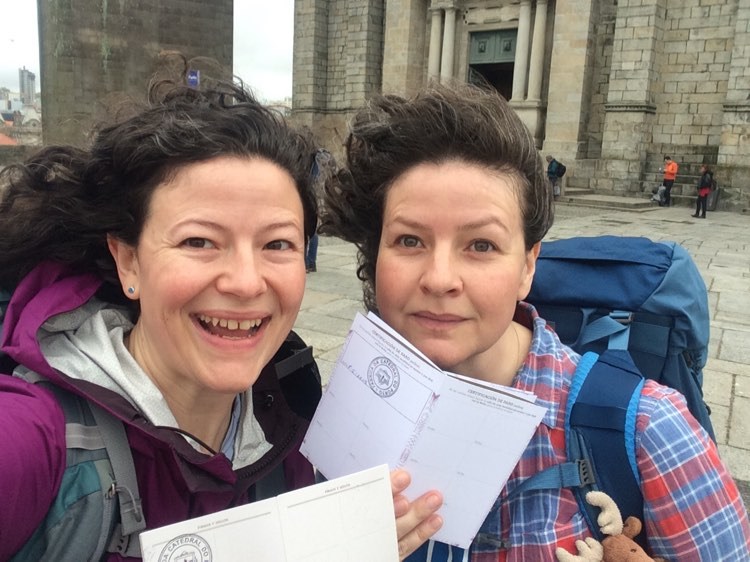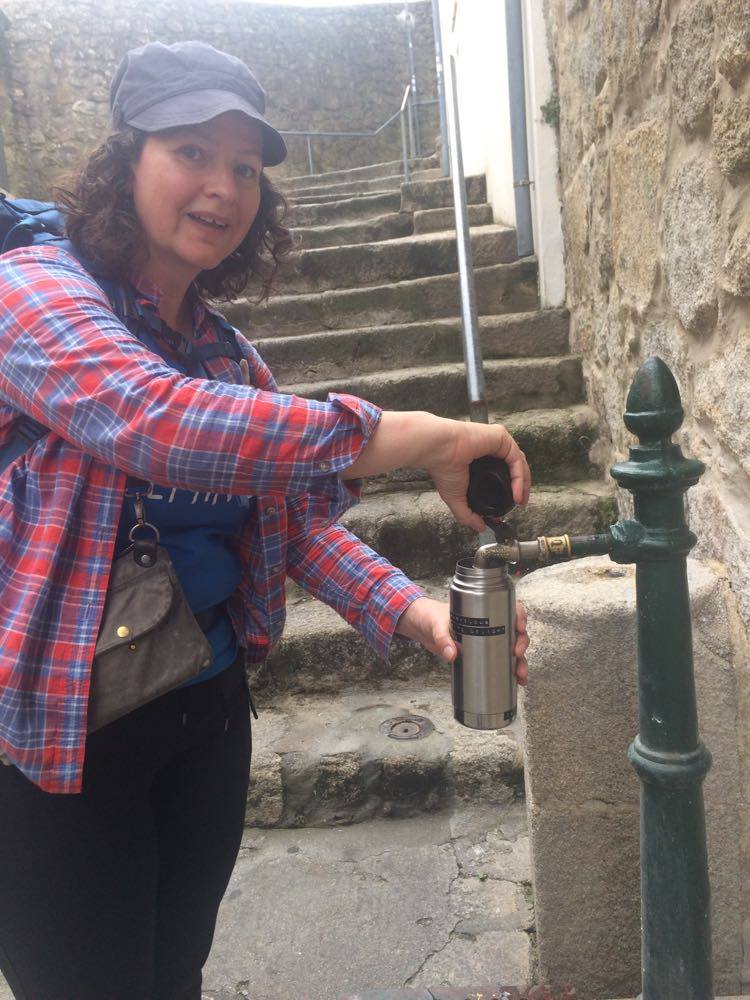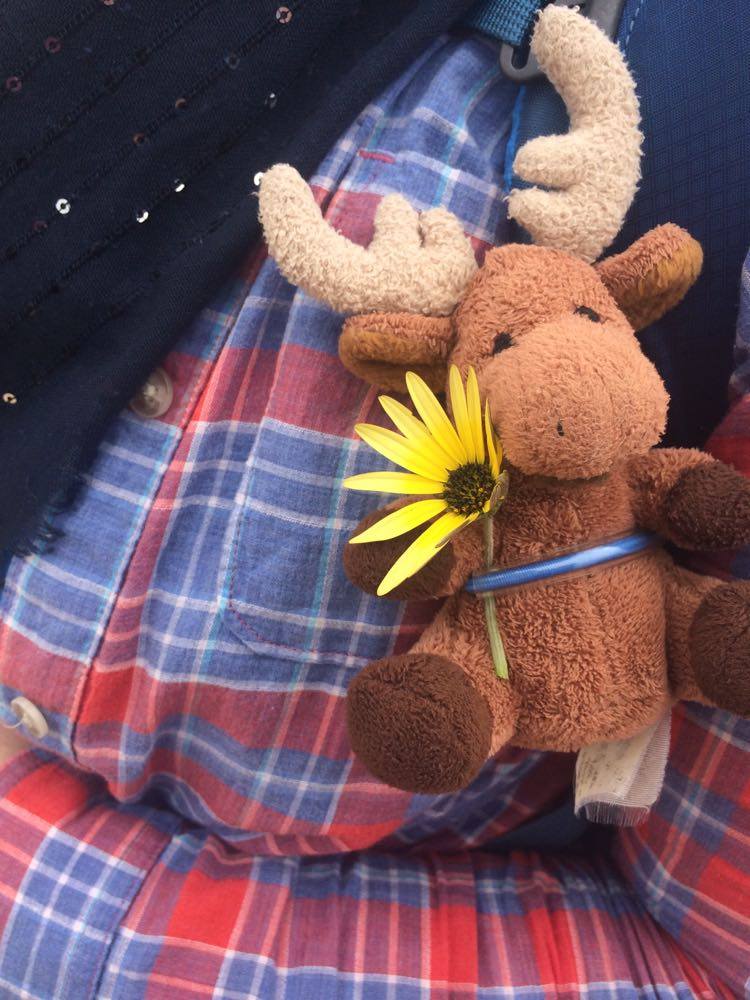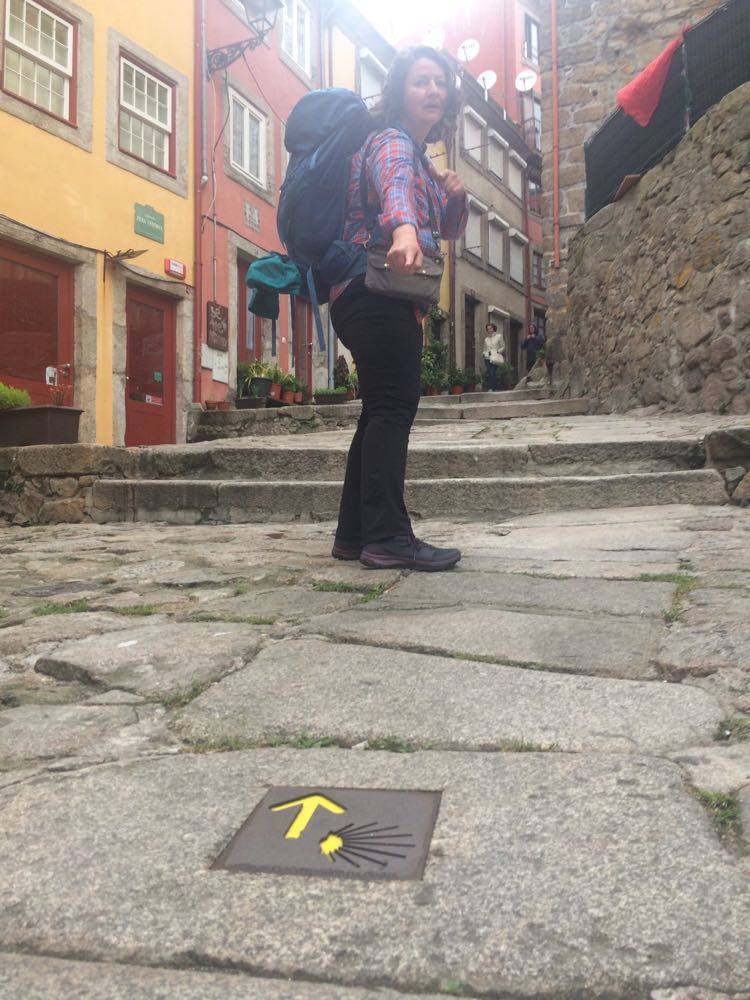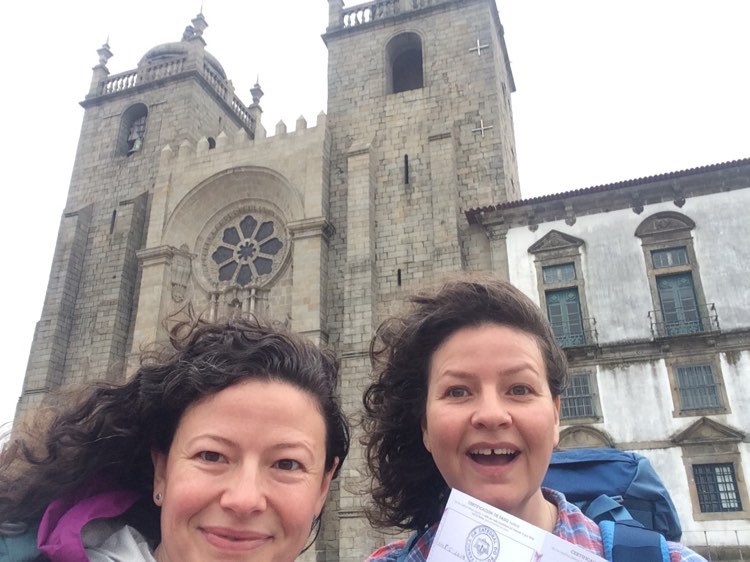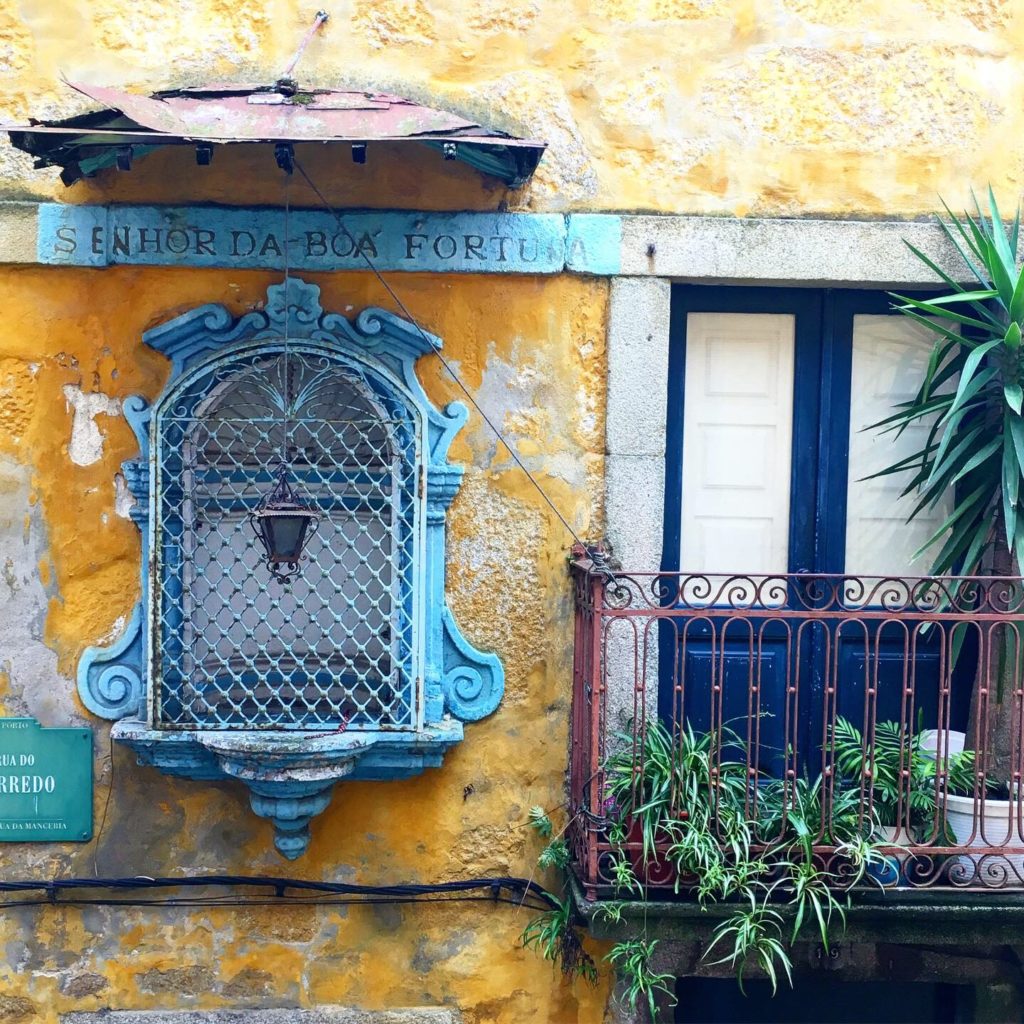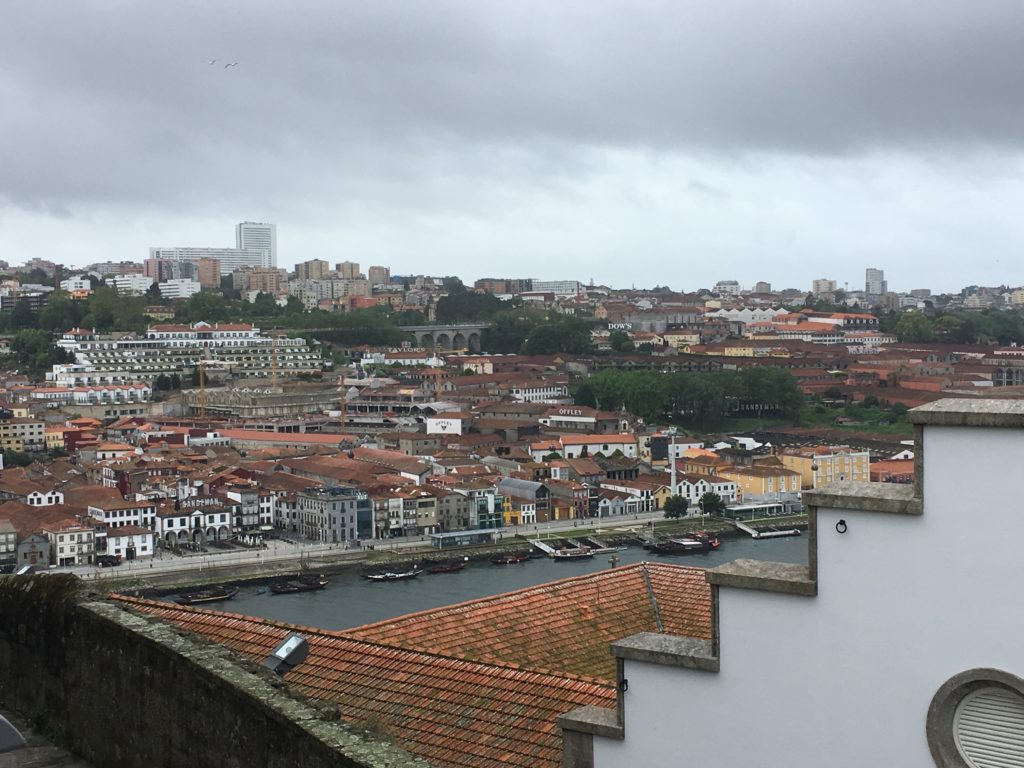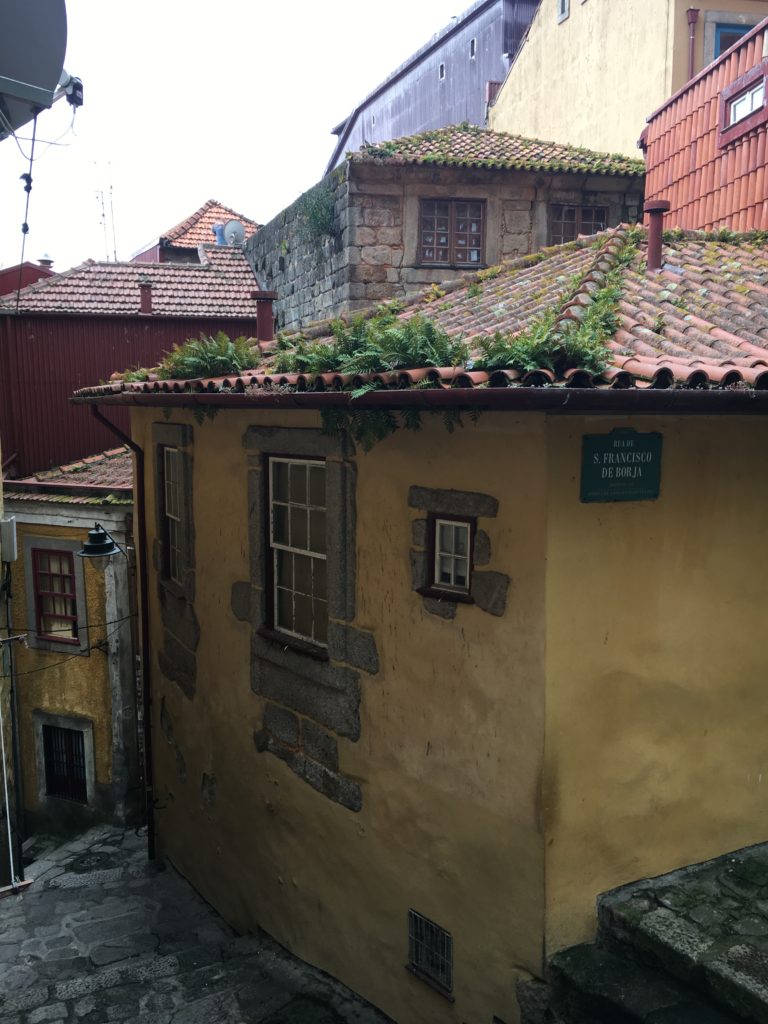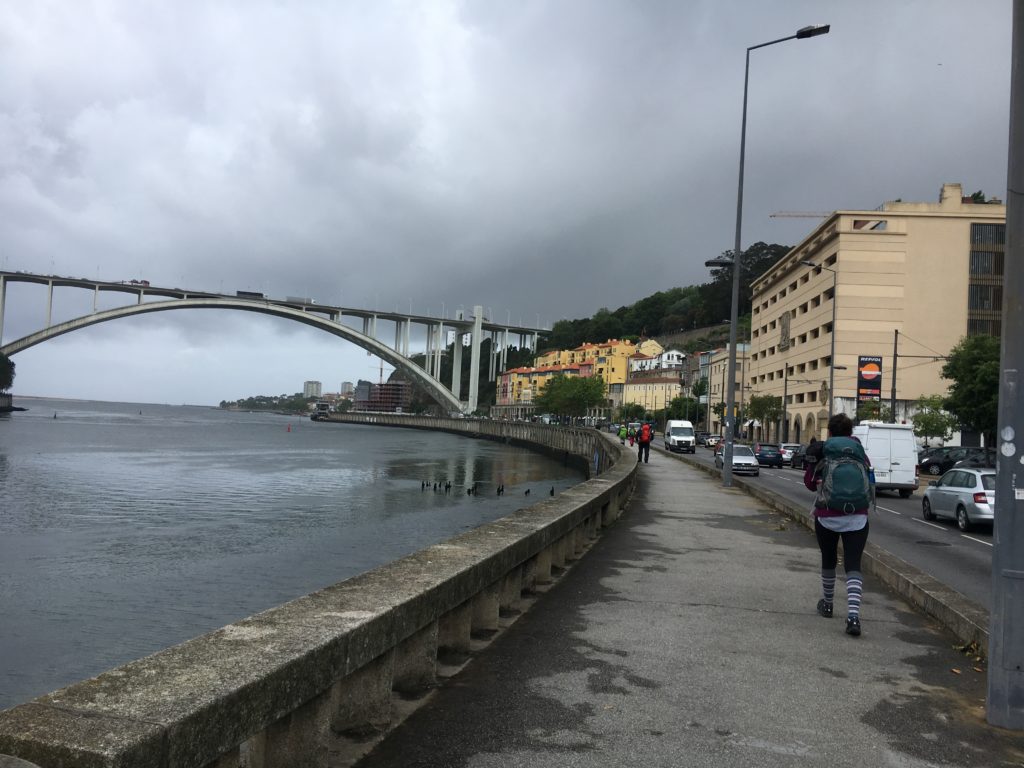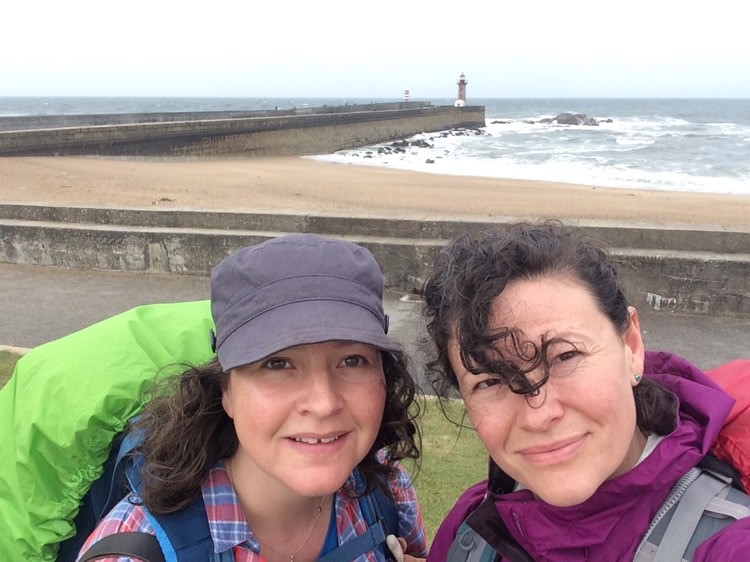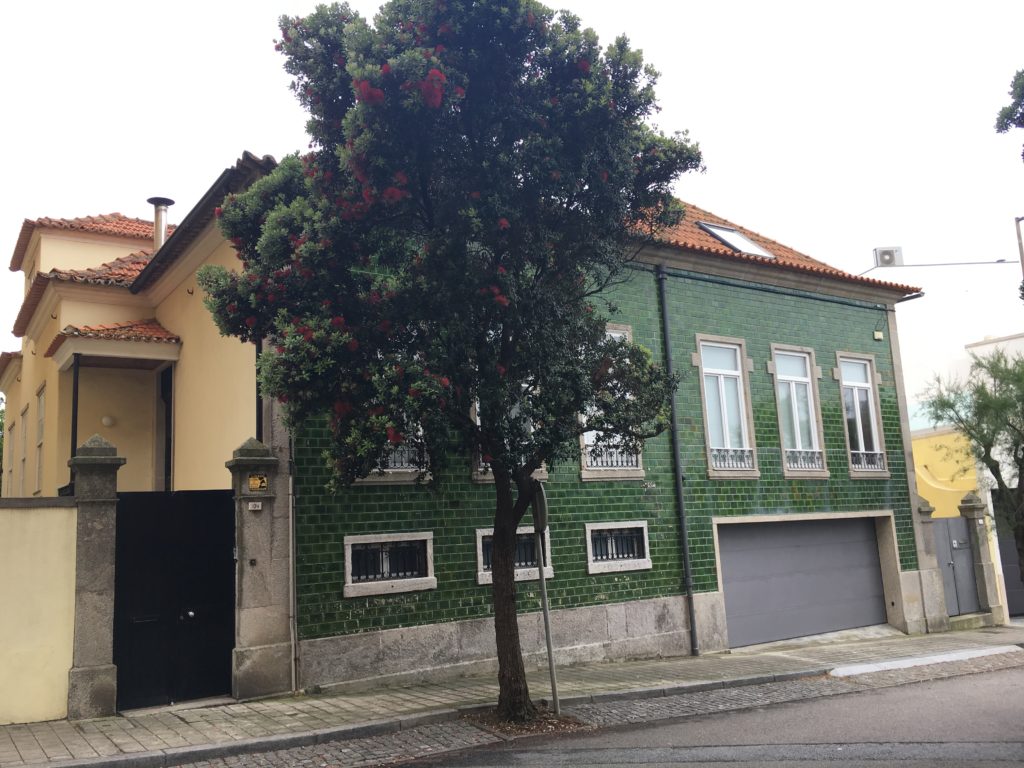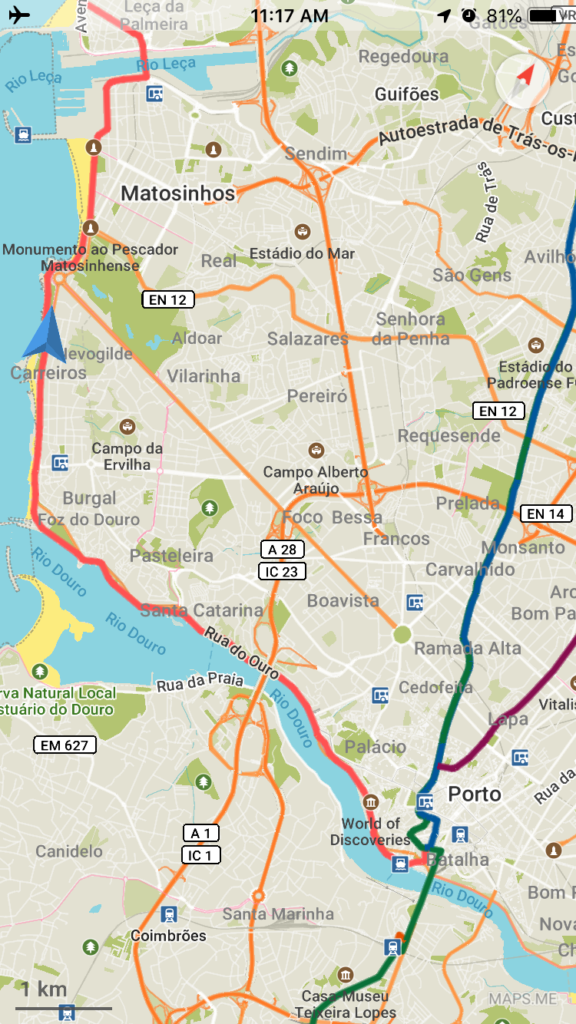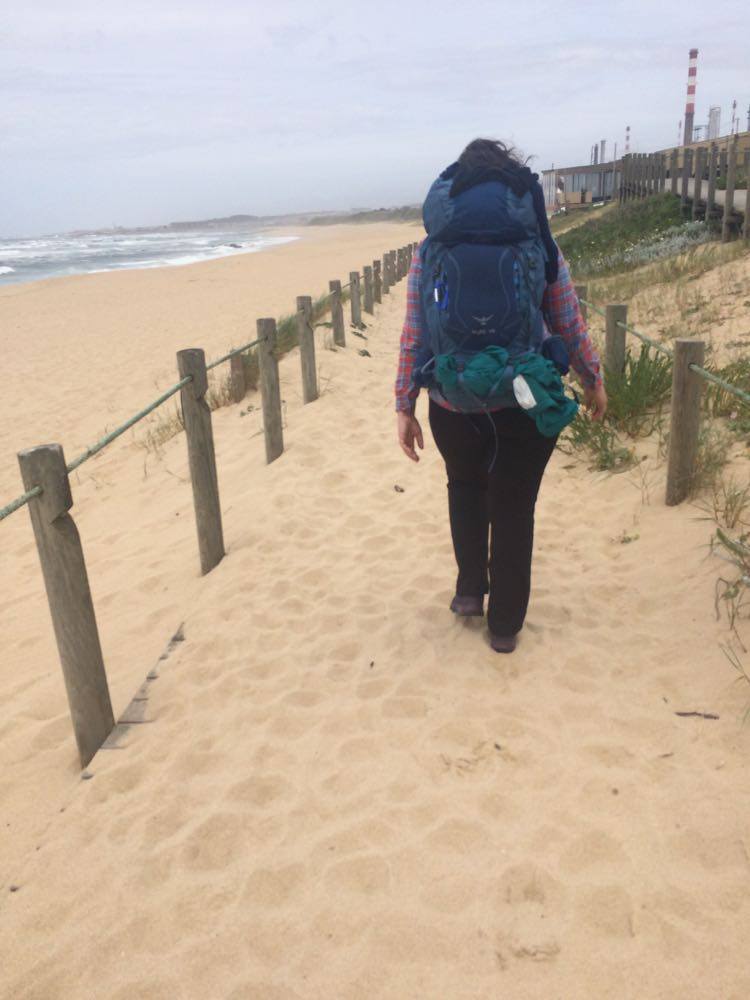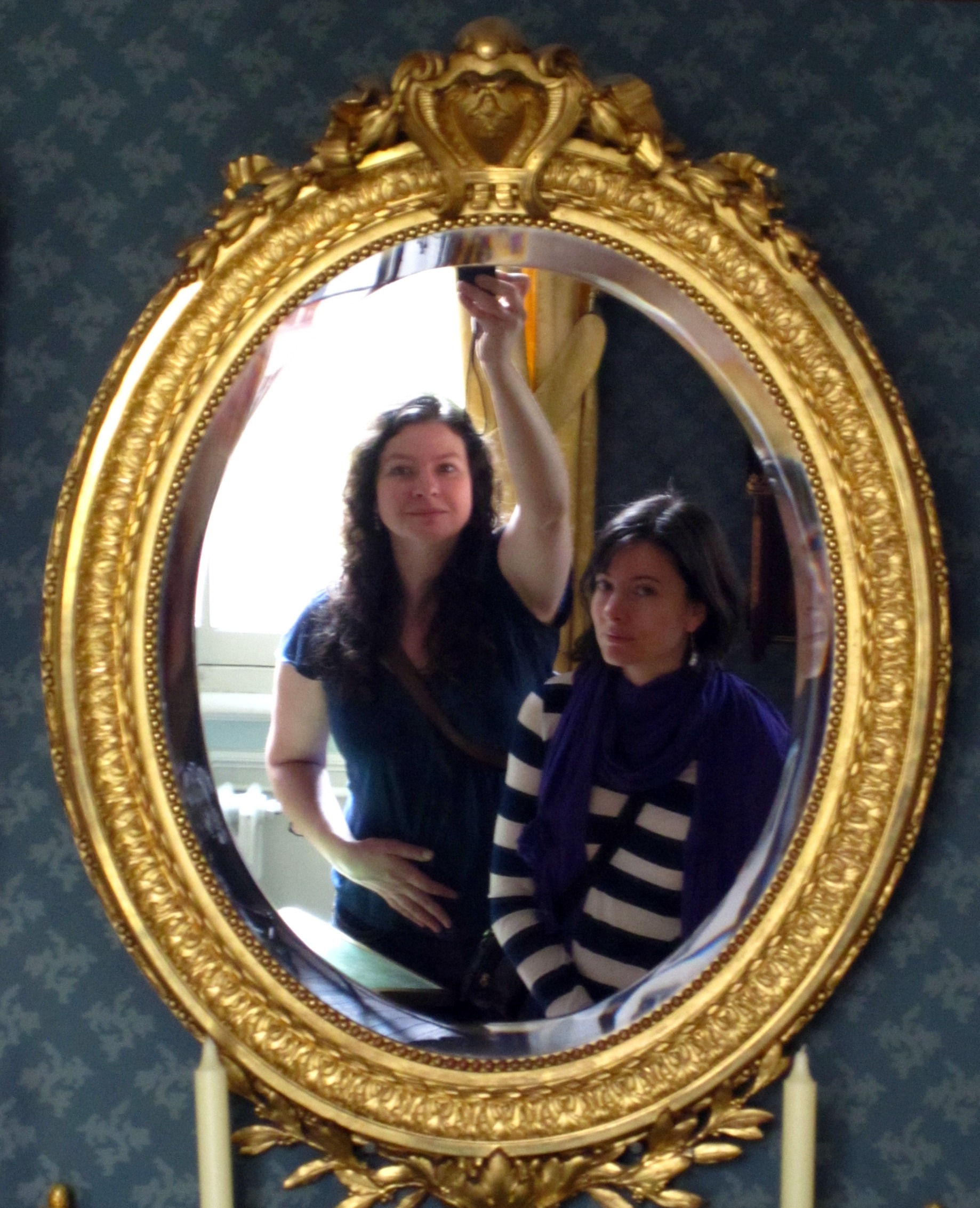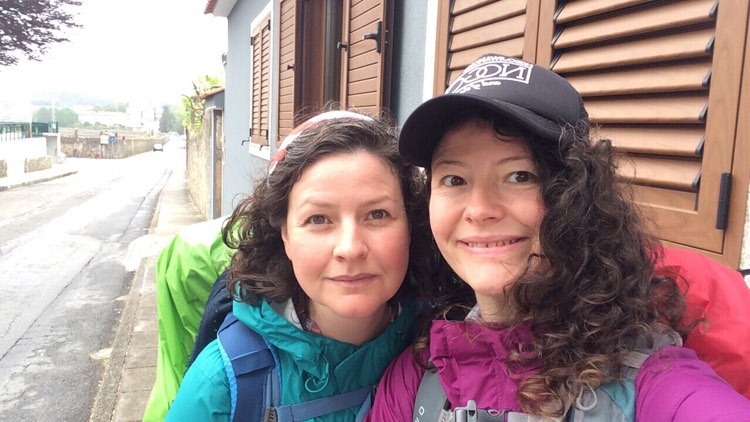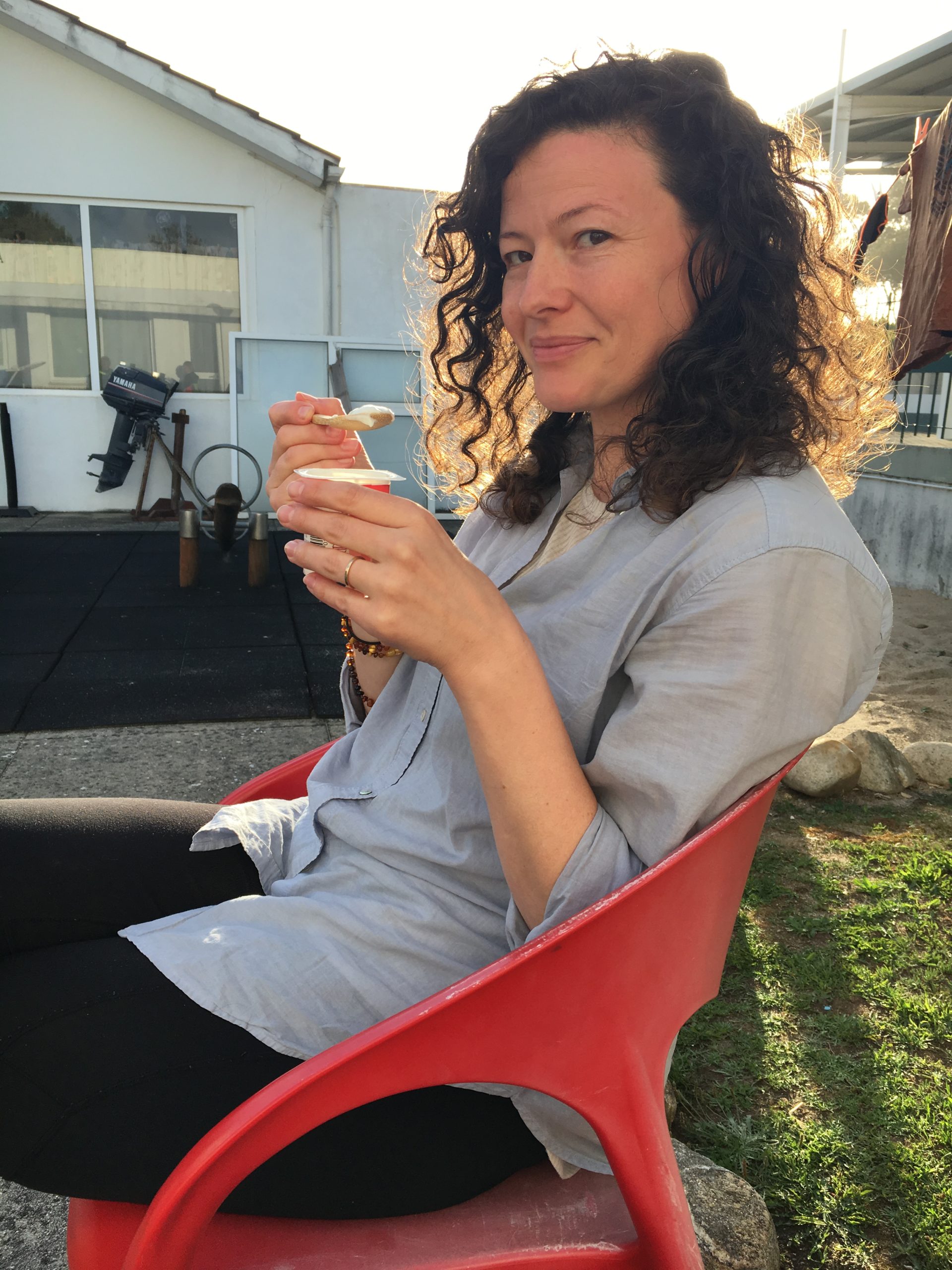
Camino Day 1 – Porto to Vila Cha
7.5 hours walking time from Porto to Labruge,
+ 10 min cab ride to Vila Cha, because the albergue was full.
26.9 km walked
(walking time includes stops for breakfast/lunch and rest breaks)
Our first day on the Camino started early for us, but maybe not early for most pilgrims – we’re just not morning people. Waking up at about 7:40am in the Blue Socks Hostel in Porto was cosy and comfortable, and didn’t make you want to leave immediately. We’d pre-paid for the breakfast buffet, so took a quick trip down to the crypt and ate fresh croissants, fruit, cereal, and something coffee-adjacent. Stashing some apples and croissants for later, we were ready to go.
We donned our packs and set out on a very grey, overcast morning, up the hill to the Sé do Porto, Porto Cathedral, where we got our first stamp (sello) on our Credencial del Peregrino, the pilgrim’s passport, and formally began our pilgrimage. The chimes rang out 9am as we were leaving the cathedral. On the way down the hill, back towards the Douro River, where our path lay through ancient and winding staircases in the Medieval city, we passed by a building with a yellow wall and blue accents, which said in Portuguese “Lord of Good Fortune.”
The path we chose for the beginning of our pilgrimage was the coastal route out of Porto, the Senda Litoral, which meant following the river to the ocean, then walking along the Atlantic coast. You can see a screenshot of our route out of Porto above, with a red line indicating our path. Along the way, on the banks of the Douro, there are wonderful buildings, both in good and bad repair – if you like urban decay and architecture in general, this path is great. The river was, historically, like a highway, and a huge international connection for shipping Port wine, especially with England, whose tensions with France meant it often had to import wine from other countries. Porto was an immensely wealthy centre of trade, and the buildings might date from any time in the past 500 years or so. Many have beautiful ceramic tiles on the facades, sometimes covering the whole house, and Art Nouveau flourishes.
Walking along the Atlantic Coast, even on a cool, overcast day, was pretty terrific in a lot of ways; in many spots, you’re walking for hours on well-maintained boardwalks that serve the local community, beach-loving tourists, and pilgrims – and not just pilgrims bound for Santiago. At many points along the way, there are waymarkers in both yellow and blue – yellow indicates the Caminho de Santiago, blue indicates the Caminho de Fatima, a pilgrimage route to one of the most important shrines to the Virgin Mary in the world.
We were there in the off season, however, and so the boardwalks were often covered in deep sand that made walking (especially with a pack) quite difficult, and very few places were open for food, water, or bathrooms. When we finally did find a place that was open in Perafita at about 2pm, we were starving. Making use of our extremely limited Portuguese phrases, and with the assistance of a younger staff member who spoke some English, we ordered an omelet with a lovely side salad and reviving beer.
Following the advice of many pilgrim’s guides, I’d washed my underwear and socks at the hostel that morning – when you bring limited supplies, you have to wash them often. Since they were still wet, I hung them from safety pins from my backpack, but the cool, wet day meant they still weren’t dry, even by lunch. After that, I was more careful to wash them the night before, and allow them to dry overnight.
One of the cool things about walking in Portugal and Spain is the flowers and plants that you see along the way – many flowers I’m familiar with, but that I’ve never seen growing wild, and many I’d never seen before at all.
By the time we had lunch, a little of the shine had worn off the walk – while it was neat at first, walking a seaside boardwalk at the edge of resort towns in the off-season lost its interest after several hours. It was cold, and occasionally rainy, and it was our first day carrying the full weight of our packs. We were also feeling a bit stressed – I’d read plenty about the race to get a bed in the albergues, and as person after person passed us whenever we stopped for a rest or to adjust something, we wondered what we’d do if there wasn’t a bed when we got to the municipal albergue in Labruge.
Albergues are hostels along the Camino; many are run by the local municipality, and staffed and maintained by volunteers and donations. A bed for the night at a municipal albergue will generally cost you €8-€10 – they do not accept reservations, and you must have your pilgrim’s passport to qualify. The larger albergues hold scores of pilgrims, but on this part of the camino they may have no more than 15 or 20 beds, and fill up quickly.
When we finally did reach Labruge, tired and aching and hours later than we’d anticipated, a woman flagged us down outside a hair salon about a block from the albergue, asking if we were pilgrims and saying that the albergue was full for the night. We stood in her shop with a couple of other pilgrims who were in the same boat, as she made calls to other nearby albergues, and then called a taxi to take us all to the Albergue de S. Mamede in Vila Cha (it felt a little like rule-breaking to take a taxi, though it was just a 10-minute trip).
Like most albergues, S. Mamede is bare bones, except that it also includes a little maritime museum. It has a big, clean kitchen and a fridge, most of the things you’d need to do basic cooking, and IKEA-brand bunkbeds that are so familiar to all pilgrims who stay in municipal albergues. You can see from the pictures below that you’re in pretty close quarters to the other pilgrims.
We were some of the last people to get there that night, though just as night was falling a few more people were squeezed in and given a mattress on the floor. Sammi and I took a walk around the town in search of something dinner-y, and found a minimercado where we were able to buy some very random supplies – potato chips, fresh brown eggs (which we hard-boiled in the kitchen), beer, zucchini, cheese, bread, and yoghurt. The sun had come out by this time, so we sat in the courtyard and made a weird little meal.
It had ended up being a much longer day than we’d anticipated – starting out, we’d thought we were going to walk about 18 km, I think, but our total ended up being more than 26km at the end of the day, as you can see below. One good thing was that it was a pretty flat route, and we were always on pedestrian walkways, which wasn’t the case later.
When you arrive at any albergue, as well as at some restaurants and cafes, and some tourist info centres, you get a stamp (sello) on your pilgrim passport; this shows where you’ve been along the route. For the purposes of the pilgrim’s office in Santiago de Compostela, you really only need your starting point, and then two a day for the last hundred kilometers, which makes you eligible for a certificate saying you completed the pilgrimage. I love the ritual of collecting the sellos; it’s a nice way to mark where you’ve been. You can see my crendecial below, with the stamps from the first day – Porto Cathedral, Matosinhos’ tourism office, and our albergue.
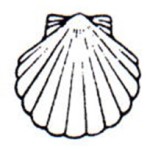
Follow our Caminho Portugues adventure!
Landing Day in Porto
Day 1 – Porto to Vila Cha (you are here)
Day 2 – Vila Cha to Rates
Day 3 – Rates to Barcelos
Day 4 – Barcelos to Ponte de Lima
Day 5 – Ponte de Lima to Rubiaes
Day 6 – Rubiaes to Tui
Day 7 – Tui to Porriño
Day 8 – Porrino to Redondela
Day 9 – Redondela to Pontevedra
Day 10 – Pontevedra to Caldas des Reies
When I’m done posting these, I’ll also post an article with my collected advice for anyone thinking of walking the Caminho/Camino, and I’ll link it here.
Photos by Candace Shaw and Samantha Shaw
